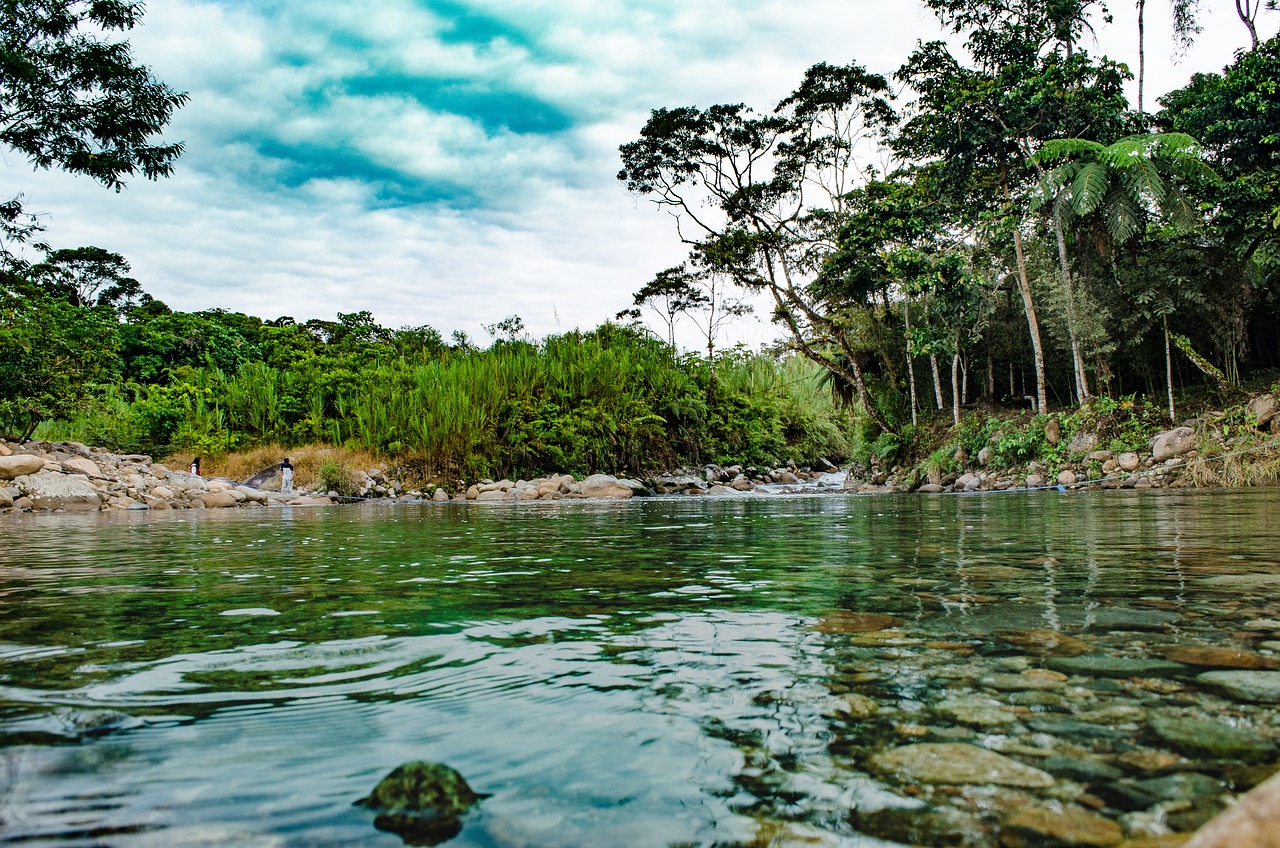
Birdwatcher’s Paradise: 6 Birds To Spot In The Amazon Rainforest
Home to more than 1,300 bird species, the Amazon Rainforest provides a sanctuary for a diverse array of fascinating and captivating avian creatures. Sadly, many of these species face threats such as hunting and habitat destruction, leading to a decline in their populations.
As researchers and ecologists intensify their efforts to protect the region’s bird communities (Amazon Rainforest conservation), it’s crucial to raise awareness about the incredible diversity of Amazonian birds. Let’s delve into some of these remarkable avian inhabitants!
1. Toco Toucan
The toco toucan is the largest member of the toucan family, measuring between 1.8 to 2 feet (55 to 65 cm) from head to tail. It has a striking appearance with mainly black plumage, white throat, chest, and upper tail-coverts, and red under tail-coverts.
Distinctive features include blue skin around its eyes, a large yellow-orange bill measuring up to 9 inches (23 cm), and a nearly flat tongue. Both males and females look alike, while juveniles have duller plumage and shorter bills.
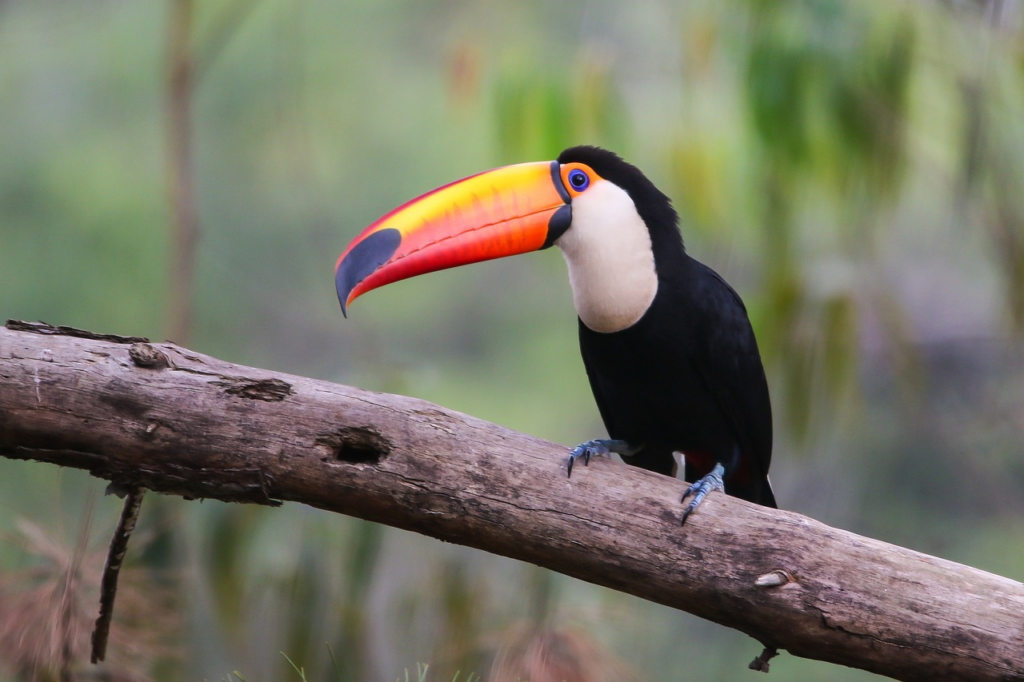
2. Hoatzin
The Hoatzin, a bird native to South America and commonly found in the Orinoco basins, inhabits riverine areas such as mangroves, lakes, and swamps.
While not known for its flying prowess, the Hoatzin can move between trees and typically remains stationary unless disturbed by loud noises. Its movements along foliage are often clumsy.
Interestingly, each of its wing digits possesses chicks with claws. As herbivores (folivores), Hoatzins primarily feed on plant leaves abundant in their habitats.
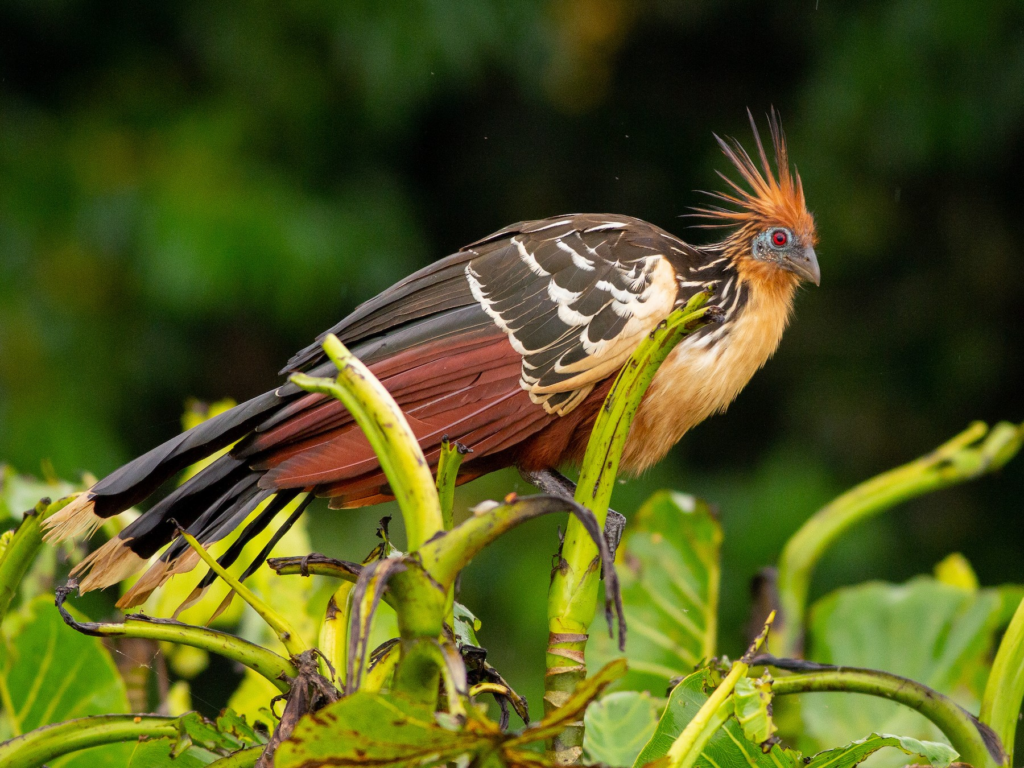
3. Great egret
The great egret, also known as the large egret, great white heron, or great white egret, is a stunning white heron distinguished by its long, slender yellow bill. Unlike the typical great blue heron, it appears more slender.
This species includes subspecies found in Africa, the Americas, South Europe, and Asia, showcasing its wide distribution and ability to socialize with other bird species.
Great egrets typically inhabit ponds, shores, marshes, and mudflats, where they feed on fish, frogs, insects, reptiles, and small mammals found in shallow waters.
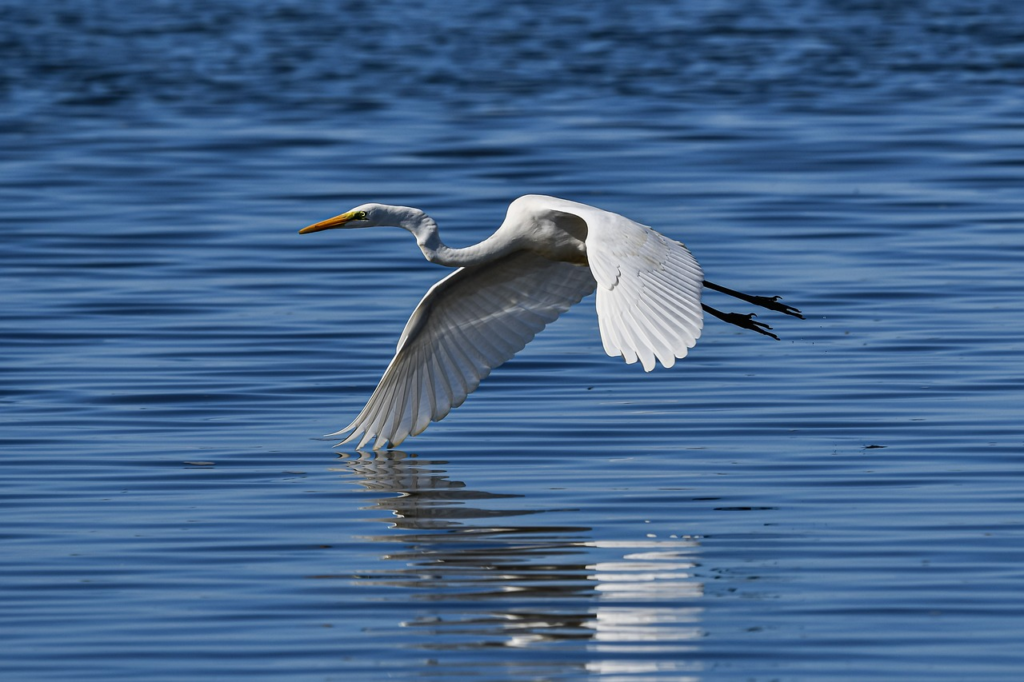
4. Amazon Kingfisher
The Amazon Kingfisher, spanning from southern Mexico to northern Argentina in the American tropics, resembles a larger variant of the Green Kingfisher.
Measuring up to 12 inches in length and significantly heavier, they feature oily green heads, shaggy crests, and white collars, distinguishing them from their green counterparts by the absence of white wing markings.
Keep an eye out for them perched on rocks and branches near water bodies, as they primarily feed on fish and amphibians.
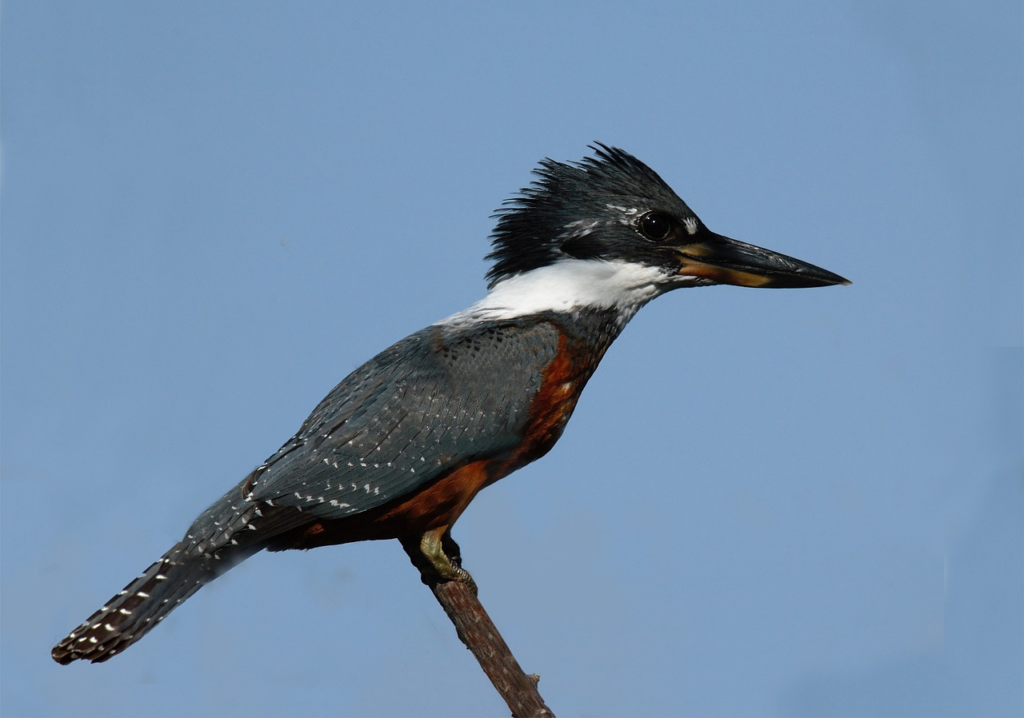
5. Black Colored Hawk
This stunning bird of prey, found in Central and South America along with Trinidad & Tobago, resides in subtropical or tropical moist lowland forests and subtropical or tropical swamps.
It is characterized by a white head with buff tones and black shaft streaks on the crown, a vibrant cinnamon-rufous body that fades to a lighter shade on the chest, featuring a black crescent on the upper breast, and a back adorned with black shaft stripes. Its tail feathers are black with rufous barring.
These birds are frequently observed swooping down to prey on fish, small lizards, insects, and rodents.

6. Golden Headed Manakin
Belonging to approximately 60 species of manakins native to the American tropics, the Golden-Headed Manakin is an adorable and vibrant bird, typically measuring around 3.7 inches in length and weighing less than half an ounce.
While females and juveniles bear a resemblance to female White-Bearded Manakins, adult males are distinguished by their black bodies, golden caps, white and red thighs, pink legs, and yellow bills.
Frequently spotted in low-elevation forests and plantations, their unique mating ritual involving jumping and sliding, accompanied by a distinctive buzzing zit-zit call, is a captivating sight to witness.

With a diverse Amazon wildlife, the rainforest harbors a huge number of different species of birds. Are you a birdwatcher? If yes, then you are in for big surprises as you go for an adventurous Amazon jungle trekking tour!




